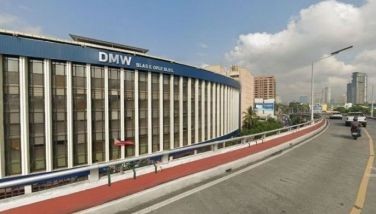The road to the Taj Mahal

NEW DELHI — During full moon, the white marble used to build the Taj Mahal glows like a pearl. Visitors are told that it’s the best time to see the monument to love, built by Mughal Emperor Shah Jahan for his favorite wife, Muslim Persian princess Mumtaz Mahal.
The Taj Mahal is open for full moon tours only three nights a month, and only for special groups. Full moon or not, however, about 20,000 tourists visit the Taj Mahal every day except Friday, when the monument is closed.
Last year, 6.29 million foreigners, mostly from the United States and Western Europe, visited India for leisure, accounting for $16.56 billion in tourism receipts. For sure, many of them visited the Taj Mahal in the city of Agra in Uttar Pradesh state, about 200 kilometers from the capital New Delhi.
More than foreigners, however, this country’s 1.22 billion people keep the local tourism industry robust. Last Monday night the well-lit landmarks in this capital were full of visitors; I was told that it was a typical sight.
The Taj Mahal itself had a crush of visitors when I visited Sunday afternoon – also typical, according to the tour guides. There was hardly room to breathe inside the monument. I must have lost 10 pounds, sweating inside and sweltering in the pounding afternoon heat in the open areas. When the temperature soars to nearly 50 degrees Celsius during an average summer in India, the Taj Mahal is shut down. Temperature in Agra has hit a record 79 degrees Celsius, but that was way back in 1932.
In recent days, the temperature in Agra has averaged 33 degrees. That’s scorching in Manila. Maybe it was my imagination, but I think even the cows – free to roam in many places here – were enervated by the heat and barely moved where they rested, right smack on the narrow road leading to the Taj Mahal, from the moment we arrived until we left about four hours later.
Neither heat nor monsoon rains nor cattle blocking the street can keep away the hordes of tourists that descend on Agra to see the Taj Mahal as well as the Agra Fort and other sights in the city. And the Indian government is keen to bring in more visitors. Nearly 6.3 million foreign visitors is not a lot for a country this size, with its unique culture and many travel attractions. Much smaller Philippines is expecting 4.5 million tourist arrivals this year. And Thailand got 19 million foreign visitors in a year of massive flooding.
What does India do to lure more visitors? For one, it is improving access to its top tourist destination. Last Aug. 9, Indians got their first expressway. Stretching 165 kilometers, the Yamuna Expressway cuts by half the travel time to the Taj Mahal.
Our tour group drove 40 kilometers southeast of New Delhi to enter the expressway at Greater Noida. The entire drive from Delhi to Agra took two-and-a-half hours. That’s a major improvement from the grueling five hours on the old route.
In just a little over a month since the “Taj Expressway” was opened, concerns have been raised that the resulting increase in visitors could ruin the Taj Mahal, a UNESCO World Heritage Site. I know players in the Philippine tourism industry who would love to have that problem rather than falling visitor arrivals.
* * *
Actual construction of the six-lane, controlled-access Yamuna Expressway took about five years. Completed two years ahead of schedule, the project cost $2.32 billion.
The expressway is so new work teams were still painting the top part of the striped perimeter fence green when we drove past. Certain stretches of the road shoulder were still being covered with turf.
The project is not without controversy. Farmers displaced by the construction are complaining that they did not get sufficient compensation for their lands from the government.
We didn’t see any farmers protesting during the long drive. Instead on both sides of the expressway, fields of corn and sugarcane stretched as far as the eye could see. The land was dotted with kilns for red stone bricks. Farmers worked the land with buffaloes. I saw donkeys, horses and a camel.
Indians told me their people still had to get used to the idea of using an expressway. It may also be the toll rates: cars and jeeps are charged 320 rupees (about P247) for the entire stretch, although there’s a discounted round-trip rate of 510 rupees (about P394). Traffic was so light that on the drive back to Delhi at dusk, I saw a goat and a dog crossing the expressway. There were a number of dogs resting on the road shoulder.
India is hoping the expressway will spur economic development along its route. We spotted a massive sports complex along the way. Greater Noida is planning to set up a night safari - only the fifth in the world. But development plans revolve around the national treasure, the Taj Mahal. A new international airport is being eyed to serve Agra.
That will be in addition to the Indira Gandhi International Airport in New Delhi, which had already won several awards even before it opened its Terminal 3 in 2010. The new passenger terminal is the eighth largest in the world.
The Philippines doesn’t have a 17th-century manmade edifice as magnificent as the Taj Mahal. But we have natural wonders around which tourism infrastructure can be developed to lure more visitors, while at the same time preventing the deterioration of the sites.
As Indians are showing in the Taj Mahal, there is no room for complacency in tourism development, even in one of the world’s top travel destinations.
- Latest
- Trending





























